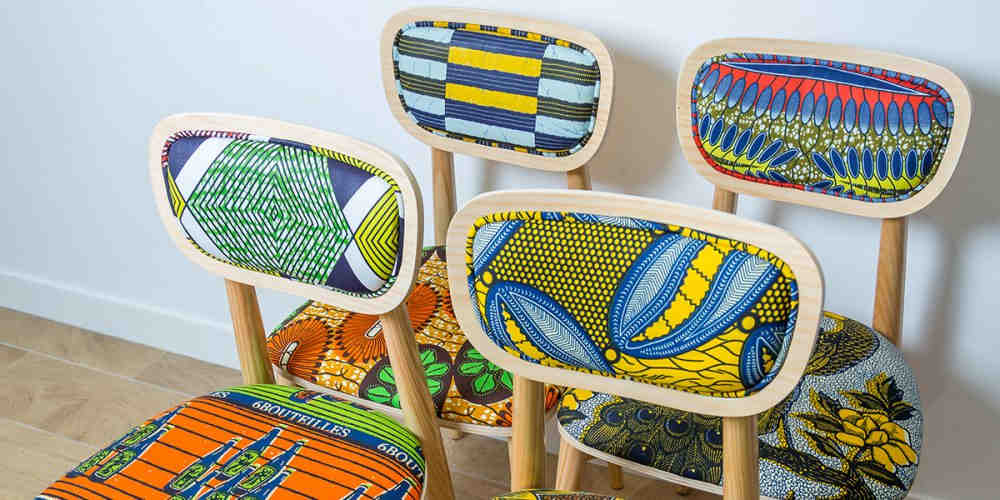As my fourth year in Dakar – the capital of Senegal – approaches, I proudly look around my house to recognize indisputable evidences of my permanence here: baskets, tribal ornaments, locally sewn dresses, mud-cloth bed throws. I love to absorb local styles and traditions and to mix them with my personal touch, being it in my cuisine, in my personal clothing style or in the home décor.


I have always had a passion for interiors and having the chance to live in such a unique place, home to so many original décor elements, is definitely an opportunity not to miss. Among all the African inspired décor trends that one can absorb, the use of local colorful cotton fabrics is maybe the most remarkable and whose presence will not pass unobserved.
Referred to as African wax prints, or more commonly as wax, due to their production process that includes a wax-resist dyeing applied to the whole cloth, they are traditionally used by African women to sew their amazing dresses and foulards. But they are so beautiful, needless to say, original and versatile that lately they have gone global, becoming protagonists of both the international clothing fashion and of the home décor scenario.

Colorful and bright, with mesmerizing patterns, these iconic fabrics are perfect to revive a shabby old chair, to create attention drawing pieces or to generally add an ethno chic touch to any interior. Their neat graphic lines, regular floral or animal motifs can be brilliantly transposed onto wallpapers, big pieces of furniture but also on smaller objects such flowers pot or home linens.





The bravest could delight themselves into a total look. Personally, I prefer to choose one single wax item, being it a batch of pillow cases, or a lamp cover, and place it strategically into a room to revive the atmosphere. The result is great, guaranteed.


African Textiles, a bit of History
It will surprise you to know that originally wax prints do not come from Africans but from Dutch people who, back in late XIXth century, during their colonial adventure in Indonesia, sized a local technique to produce a kind of wax coated fabric, the batik. As their empire expanded and new commercial markets opened, the batik landed in West Africa, where it soon became style. Africa’s fight for independence in the 1960s led to these fabrics s being made locally and today some of the major wax producers are from Nigeria, Ghana and IvoryCoast; but is still a Dutch company (Vlisco, whose foundation dates back to 1846) to maintain the record as the leader wax designer and retailer.
African Textiles, an original Storytelling
It will also surprise you to know that wax prints hold a strong non verbal communication power. Their motives and patterns are, in fact, not just a beautiful adornment to get wrapped into (or to decorate home with!). Each design can, in fact, reflect the tribal origin, marriage, health and social status of the wearer. Or simply leave a powerful message, which is the case of two among the most famous prints: the Horse, known also as “I run faster than my rival” referring to the rivalry between wives; and the Birdcage or “if you go, I go too” to clearly warn men about reciprocity in a libertarian interpretation of marriage.


Latest african prints may include every day elements such as laptops, mobile phones, clocks, high heels, bags, roller skates, public buses and so many others you won’t believe it.
Inspirational, isn’t it? For those willing to know more, I find this a super interesting deep dive on wax origins and history.
African inspired patterns are also one of the latest design trends spotted at the Milan Design Week 2018: discover more one the eBook N/T Issue #1






